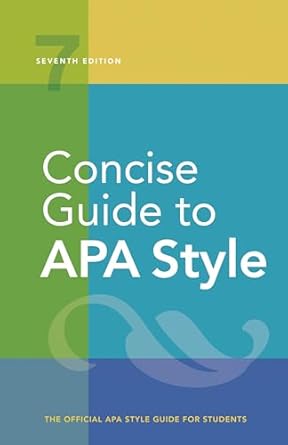[toc]
mastering reference list order a guide
Concise Guide to APA Style: 7th Edition (OFFICIAL)
Page 264 Review
Understanding Reference List Ordering in Academic Writing
Creating a well-organized reference list is crucial for academic integrity and clarity.
This excerpt from an ebook delves into the specific rules governing the ordering of entries in a reference list, ensuring consistency and ease of navigation for readers.
Let’s break down the key principles outlined in the text.
Ordering by Authorship
The text emphasizes the importance of author order in determining the arrangement of entries.
Here’s a breakdown:
- Single vs.
Multiple Authors: “One-author entries should precede multiple-author entries beginning with the same first author, even if the multiple-author work was published earlier.” This rule prioritizes single-author works, placing them before any collaborations starting with the same lead author.
For example, a paper solely authored by Davison, T.
E. would appear before a paper co-authored by Davison, T.
E. and McCabe, M.
P., regardless of publication date.
- Identical Author Order: “Multiple-author entries in which all authors appear in the same order should be arranged by the year of publication (the same as one-author entries).” When multiple works share the exact same authors in the same sequence, chronological order takes precedence.
Thus, Costa, P.
T., Jr, & McCrae, R.
R. (2013) would precede Costa, P.
T., Jr, & McCrae, R.
R. (2014).
- Varying Subsequent Authors: “Multiple-author entries with the same first author and different subsequent authors should be arranged alphabetically by the surname of the second author or, if the second author is the same, the surname of the third author, and so forth.” This is where alphabetical order comes into play, focusing on the surnames of subsequent authors.
For instance, Jacobson, T.
E., Duncan, B., & Young, S.
E. (2019) would come before Jacobson, T.
E., & Raymond, K.
M. (2017) because Duncan precedes Raymond alphabetically.
Similarly, Pfeiffer, S.
J., Chu, W.-W., & Park, S.
H. (2018) would precede Pfeiffer, S.
J., Chu, W.-W., & Wall, T.
L. (2018) due to Park coming before Wall.
Handling Same Author and Same Date
The text also addresses the situation where multiple works share the same author(s) and publication year.
This requires a unique approach to avoid ambiguity in in-text citations.
“Ambiguity can arise when multiple works cited in a paper have the same author and date (i.e., the same author[s] in the same order and the same year of publication) because the same in-text citation would then correspond to multiple reference list entries.
To differentiate references with the same author and year, put a lowercase letter after the year in both the in-text citation and the reference list entry.”
The solution is to append lowercase letters (a, b, c, etc.) to the year in both the in-text citation and the corresponding reference list entry.
The text provides specific examples:
- “The letter format for references with years is ‘2020a,’ ‘2020b.’”
- “The letter format for references with no date is ‘n.d.-a,’ ‘n.d.-b.’”
- “The letter format for in-press references is in ‘in press-a,’ ‘in press-b.’”
The assignment of these letters follows a strict chronological order. “Assigning the letters is a two-step process.
First, compare the dates.
References with only a year precede those with more specific dates, and specific dates are placed in chronological order.” This means an entry with just the year (e.g., 2020) will come before entries with a more specific date (e.g., 2020, March 26).
Entries with specific dates are then ordered chronologically.
Consider the examples provided:
- Azikiwe, H., & Bello, A. (2020a).
- Azikiwe, H., & Bello, A. (2020b, March 26).
- Azikiwe, H., & Bello, A. (2020c, April 2).
The (2020a) entry comes first because it only includes the year.
The (2020b, March 26) entry comes next, followed by (2020c, April 2), reflecting the chronological order of the dates.
Conclusion
Mastering the art of reference list ordering is essential for any academic writer.
By following these guidelines, writers can ensure their reference lists are accurate, consistent, and easy for readers to navigate, ultimately strengthening the credibility and impact of their work.
The ebook excerpt provides a clear and concise explanation of these rules, offering valuable guidance for researchers and students alike.
Buy full ebook for only $18: https://www.lulu.com/shop/american-psychological-association/concise-guide-to-apa-style-7th-edition-official/ebook/product-rmzpq54.html?page=1&pageSize=4
Mastering Reference List Order A Guide
Read more: Writing Perfect Reviews: A Referencing Guide

